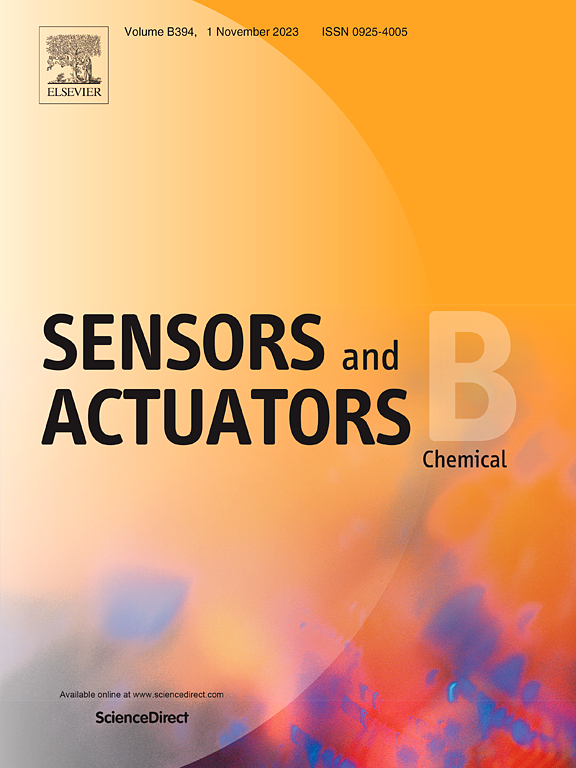基于旋转磁场诱导均匀磁珠分布的多靶点核酸检测集成微流控平台
IF 8
1区 化学
Q1 CHEMISTRY, ANALYTICAL
引用次数: 0
摘要
在并发呼吸道疾病暴发期间,高效的多病原体检测仍然至关重要,但现有的多病原体检测平台受到复杂荧光编码和高试剂成本的限制。本文介绍了一种新型的旋转磁控微流控芯片系统,用于同时检测多病原体核酸。该系统利用独特的旋转磁场驱动磁珠主动动态捕获溶液中的核酸,实现磁珠的“一对四分割”,进而实现核酸样品的“一对四分割”。在优化条件下,利用四个对称排列的永磁体产生的旋转磁场实现对磁珠的精确操作,在10分钟内实现全自动核酸提取(NAE)。结果表明,该方法的提取效率可与使用商业提取试剂盒的传统人工方法相媲美,确保了可靠性和一致性。该系统能够检测低至10个拷贝/次的SARS-CoV-2 RNA,并在12种呼吸道病原体的多重检测中表现出出色的特异性和宽的动态检测范围(10¹-10个拷贝/μL)。临床样本验证证实了其在识别单一感染和合并感染方面的准确性,结果与临床诊断完全一致。本研究代表了通过物理样本分配进行多目标检测的技术范例的初步演示,在外部放大支持下实现了“单样本输入,多结果输出”策略。为临床快速、准确诊断多种病原菌提供了一种很有前景的方法。本文章由计算机程序翻译,如有差异,请以英文原文为准。
An integrated microfluidic platform for multi-target nucleic acid detection based on rotational magnetic field-induced uniform bead distribution
Efficient multi-pathogen detection remains crucial during concurrent respiratory disease outbreaks, yet existing multiplex platforms are limited by complex fluorescent encoding and high reagent costs. This study introduces a novel microfluidic chip system incorporating rotational magnetic control for simultaneous multi-pathogen nucleic acid detection. The system utilized a unique rotating magnetic field to drive the magnetic beads to actively and dynamically capture nucleic acid in the solution, enabling a "one-to-four division" of the beads and subsequently achieving a "one-to-four division" of the nucleic acid sample. Under optimized conditions, a rotating magnetic field generated by four symmetrically arranged permanent magnets was employed to achieve precise manipulation of magnetic beads, enabling fully automated nucleic acid extraction (NAE) within 10 minutes. The extraction efficiency was demonstrated to be comparable to that of conventional manual methods utilizing commercial extraction kits, ensuring both reliability and consistency. This developed system demonstrated the ability to detect SARS-CoV-2 RNA at levels as low as < 10 copies/test and exhibited excellent specificity and a broad dynamic detection range (10 ¹–10⁵ copies/μL) in multiplex detection of 12 respiratory pathogens. Validation with clinical samples confirmed its accuracy in identifying both single and co-infections, with results fully consistent with clinical diagnoses. This study represents an initial demonstration of a technical paradigm for multi-target detection via physical sample allocation, implementing a "single-sample input, multi-result output" strategy with external amplification support. It provides a promising approach for the rapid and accurate clinical diagnosis of multiple pathogens.
求助全文
通过发布文献求助,成功后即可免费获取论文全文。
去求助
来源期刊

Sensors and Actuators B: Chemical
工程技术-电化学
CiteScore
14.60
自引率
11.90%
发文量
1776
审稿时长
3.2 months
期刊介绍:
Sensors & Actuators, B: Chemical is an international journal focused on the research and development of chemical transducers. It covers chemical sensors and biosensors, chemical actuators, and analytical microsystems. The journal is interdisciplinary, aiming to publish original works showcasing substantial advancements beyond the current state of the art in these fields, with practical applicability to solving meaningful analytical problems. Review articles are accepted by invitation from an Editor of the journal.
 求助内容:
求助内容: 应助结果提醒方式:
应助结果提醒方式:


